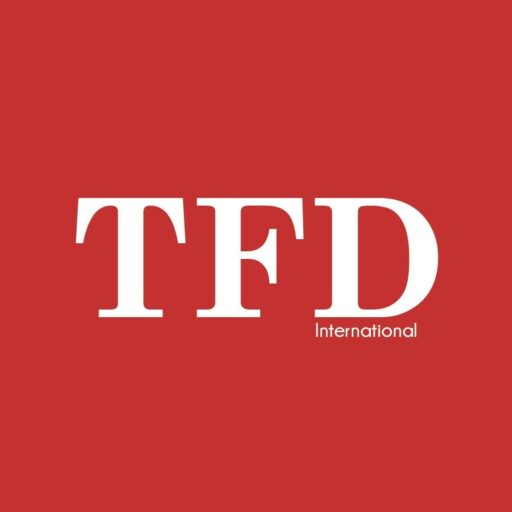The Indo-Pacific region-stretching from the eastern shores of Africa across the Indian Ocean to the western Pacific-is now the primary fulcrum of global geopolitical rivalry. Anchored by the Indian and Pacific Oceans, this theater encompasses vital sea lanes of communication (SLOCs), strategic maritime chokepoints, and the economic arteries of global trade. Over 60% of global maritime trade and 80% of global oil shipments pass through the Malacca, Sunda, and Lombok Straits. The Indian Ocean serves as a bridge between East and West, while the Pacific Ocean hosts the world’s most advanced naval forces. Whoever controls these waters commands not just maritime power, but global influence.
This region has emerged as the decisive theater in the unfolding US-China great-power rivalry, potentially marking a contemporary enactment of the Thucydides Trap-the historical pattern where a rising power threatens to displace an established one, leading to heightened risks of conflict.
II. The Thucydides Trap and Historical Echoes
Coined by Harvard’s Graham Allison, the “Thucydides Trap” draws from the Peloponnesian War: “It was the rise of Athens and the fear this instilled in Sparta that made war inevitable.” Today, China’s rapid ascent-economically, militarily, and technologically-challenges America’s post-World War II dominance, especially in the Indo-Pacific. The region thus becomes the chessboard on which this structural tension plays out, with both sides maneuvering diplomatically, militarily, and economically to reshape the regional and global order.
III. Comparative Strength: US vs. China
A. Military Capabilities
Parameter:
Naval Fleet (2024 est.)
Indo-Pacific Bases
Allied Military Presence
Modernization
United States:
296 battle-force ships (11 carriers)
Japan, Guam, South Korea, Diego Garcia
Japan (SDF), India (Quad), Australia (AUKUS)
Hypersonic programs, B-21 bomber, AI war-gaming
China:
370 ships (2 carriers, 1 under construction)
Djibouti (foreign base), South China Sea islands
Largely solo but cooperative with Russia and Iran
Massive shipbuilding, DF-21/DF-26 carrier killers
Despite China’s numerical naval advantage, the U.S. retains overwhelming power projection capabilities due to its aircraft carrier groups, forward-deployed bases, undersea superiority, and global logistics chains.
B. Economic and Technological Power
Domain:
GDP (2024 est.)
R&D Spending
Tech Leadership
Trade Leverage
United States:
$28.7 trillion
$700 billion (est.)
Semiconductors, AI, Quantum, Biotech
Global rules, sanctions, tech embargoes
China:
$18.5 trillion
$560 billion
5G, Solar, AI integration
Belt & Road, manufacturing export dominance
The economic interdependence between the two is paradoxical: while they compete for strategic dominance, their economies are intertwined-a hallmark of modern-day asymmetric entanglement.
IV. Maritime Chokepoints and Strategic Agreements
Key chokepoints in the Indo-Pacific include:
= Strait of Malacca: ~100,000 vessels annually; vital to China’s oil imports.
= Bab el-Mandeb & Hormuz: Controlled indirectly through US and Indian Ocean presence.
= South China Sea: Claimed by China (Nine-Dash Line); contested by ASEAN nations and protected by US FONOPs (Freedom of Navigation Operations).
Major Naval and Strategic Alignments:
= QUAD (US, India, Japan, Australia): Indo-Pacific security and interoperability.
= AUKUS (Australia, UK, US): Nuclear submarine transfer and tech sharing.
= India-US Logistics Exchange Agreement (LEMOA): Mutual base access.
= Philippines-US Enhanced Defense Cooperation Agreement (EDCA): Expanded US access.
= Japan’s National Security Strategy 2022: Doubling defense spending, counterstrike capabilities.
= Indonesia, Vietnam, and Singapore: Strengthening maritime patrol cooperation with US/Japan.
V. Diplomatic Signaling: 2025 Shangri-La Dialogue
The ongoing Shangri-La Dialogue 2025 in Singapore has further underscored the strategic convergence of the US and its allies.
= US Secretary of Defense Lloyd Austin emphasized:
= The US will not flinch from defending its interests… The Indo-Pacific is our priority theater.”
= Japan’s Defense Minister Minoru Kihara reaffirmed closer ties with AUKUS and the Philippines.
= India’s Defense Minister Rajnath Singh highlighted that India’s vision of the Indo-Pacific is inclusive, with “no room for hegemony.”
These statements illustrate a common thread: a collective security posture against Chinese assertiveness, without formal containment.
VI. The Future Trajectory of the US-led Indo-Pacific Alliance
= Strengthened Interoperability: Joint exercises (e.g., Malabar, RIMPAC) are increasing in scale and complexity.
= Defense Industrial Partnerships: Tech collaboration in unmanned systems, AI, and quantum warfare.
= ASEAN Alignment: Even neutral states like Indonesia and Vietnam are quietly enhancing maritime defense ties with the US and Japan.
= Supply Chain De-risking: Efforts to shift critical manufacturing out of China to ASEAN and India.
Yet, the possibility of conflict is not inevitable. The US-led alliance structure is not purely antagonistic but is also a balancing mechanism to encourage China’s responsible integration rather than exclusion.
VII. Conclusion: Navigating the Trap, Not Falling Into It
The Indo-Pacific is not merely a geographic space-it is the arena where the rules of the 21st-century global order will be written. The US-China contest, when viewed through the lens of the Thucydides Trap, suggests escalating tensions. However, history does not have to repeat itself.
Through calibrated deterrence, multilateral partnerships, and the strategic inclusion of ASEAN and South Asian powers, the Indo-Pacific may yet become a zone of managed competition rather than conflict. The next decade will determine whether the world succumbs to great-power war or achieves a new equilibrium through cooperation and constraint.
Home Views & Opinions Indo-Pacific as the fulcrum of great-power rivalry: The thucydides trap & the...
Sign in
Welcome! Log into your account
Forgot your password? Get help
Password recovery
Recover your password
A password will be e-mailed to you.





